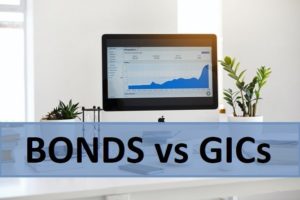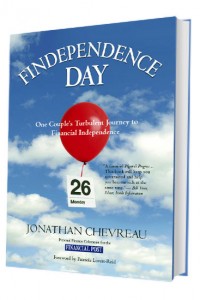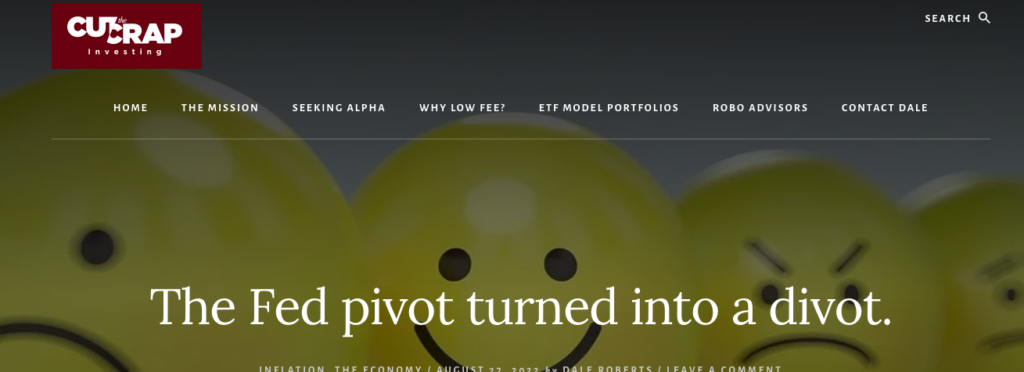
By Mark and Joe
Special to the Financial Independence Hub
Even for seasoned investors, during times of market volatility, there is a tendency for investors to shift their mindset from capital growth to capital preservation.
So, for capital preservation, are bonds or GICs better? Which is better, when?
We’ll unpack that a bit in today’s post and offer our take on how we manage our portfolios, along with insights from clients too!
Bonds 101
What are bonds?
We’d like to think of bonds as an “IOU.”
A bond is
a certificate you receive for a loan you make to a company or government (an issuer). In return, the issuer of the bond promises to pay you interest at a set rate and to repay the loan on a set date. (
Reference).
Bonds are very similar in fact to GICs (Guaranteed Investment Certificates – more on that in a bit), in that governments or financial institutions issue them to raise funds from investors willing to lend in exchange for interest. However, a major difference between the two is that in most cases, bonds are publicly traded, meaning investors have liquidity even if their principal is locked for the bond’s tenure (length of time invested). As a result, bond investors are exposed to capital gains/losses as bond prices are affected by various factors such as equity market performance, the prevailing interest rate, foreign exchange rates, and other economic factors.
We can see this playing out right now. There is lots of talk about bond prices effectively going “nowhere” anytime soon with interest rates rising.
Interest rates reflect the cost of borrowing money. General lending and saving money practices amongst institutions and retail investors alike make the economy go round!
If the economy is growing quickly or if inflation is running hot, then our central bank (Bank of Canada) may increase interest rates. This triggers retail financial institutions to raise the rates at which they lend money, pushing up the cost of borrowing. When this happens, institutions may also raise their deposit rates, which makes the incentive to save money and keep savings intact more attractive for folks like us too.
While any central bank is responsible for setting a country’s short-term rate, they do not and cannot control long-term interest rates. Market forces and broader economic factors are simply too complex and too strong to easily contain. So, market forces determine long-term bond pricing. That’s important to understand since this is where some bonds or bond ETFs might be helpful for you.
Bond prices and interest rates as they relate to GICs
So, we have summarized that bond prices have an inverse relationship with interest rates.
Rates go up, bond prices come down.
Understanding and accepting interest rate risk is generally part of the game when you own bonds.
Bond pros and cons:
1. Liquidity – bonds (bond ETFs in particular) offer investors liquidity as they are publicly traded, you can get your money back without paying hefty redemption penalties less any transaction costs typically.
2. Lending options – you’ll read below that GICs are only issued by financial institutions and government-backed entities (for a reason!), but bonds can be issued by even corporations. So, you have many options – a portfolio of bonds can include different issuers, with different maturities, with different ratings (i.e., quality of the bond issuer subject to default) which can help bond owners increase their returns.
3. Bonds have volatility – we believe bonds are not “as safe” as GICs since they are exposed to capital gains and losses; market factors mentioned above.
There is of course much more to any bond story but this primer is meant to draw a snappy comparison of which is better, when, below!
GICs 101
GICs, by nature of their very name, offer more stability given they are backed up by the Canadian government – so they can be considered a lower-risk, lower-reward fundraising tool.
A GIC is an investment that protects your invested capital. You will not lose money on the investment.
GICs can have either a fixed or a variable interest rate. (
Reference).
Like bonds, interest rates offered by GICs can vary over different maturities, between institutions, but rates are generally higher over longer periods of investing time.
Guaranteed Investment Certificates (GICs) are considered lower-risk investments because the guaranteed part means you are guaranteed to get back the amount you invest — the principal — when your GIC matures.
Ideally then, you buy a GIC, hold it to maturity, and get your principal back AND interest as well. This is not unlike a saving account: except that your money is locked in to grow for a predetermined period of time. When the investment matures or reaches the end of that time period, you get your money back plus the agreed-upon amount of interest.
As long as you let your GIC mature, you are guaranteed that money. However, if you withdraw the funds earlier than the certificate contract allows, you will be penalized and may lose some or all of the interest.
That said, some GICs are cashable or redeemable, but they typically come with a lower interest rate. Also, if you do need to withdraw your funds, you could end up paying a penalty.
Beyond the nuts and bolts of some GIC products, here are some considerations below.
GIC pros and cons:
1. Safety – while bonds (and bond ETFs in particular) offer investors potentially higher investment returns, because GICs are safer, they tend to deliver lower returns for the risks-taken; based on the guarantees provided. Your GIC is insured if you bought it at 1) any major Canadian bank – banks are members of the Canada Deposit Insurance Corporation (CDIC),or 2) a credit union or Caisse Populaire. (This means you will get your money back if the financial institution where you bought your GIC closes down, defaults or the institution is unable to pay you when the GIC matures. Coverage depends on the value and type of GIC you hold.
Click here to see some very important term coverage information on CDIC!
2. Inflation risks – because regular GICs have a relatively low expected return, they may not keep pace with inflation. While some market-linked GICs exist (that don’t pay a fixed rate of interest), even then these GIC products may not beat inflation.
Bonds vs. GICs – Which is Better?
Now, the drumroll … bonds vs. GICs – which is better?
We believe bonds can be great for many investors.
The key reasons to own bonds, in our opinion, is as follows: Continue Reading…








